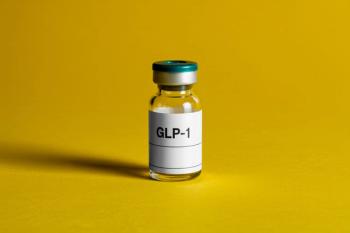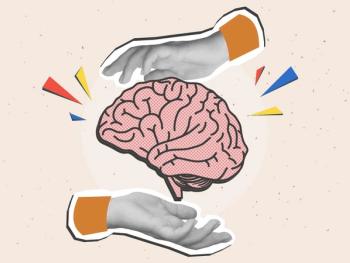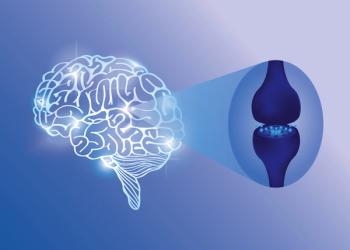
- Psychiatric Times Vol 26 No 7
- Volume 26
- Issue 7
Development of a Transdiagnostic Unified Psychosocial Treatment for Emotional Disorders
Research emerging from the field of emotion science suggests that individuals who have anxiety and mood disorders tend to experience negative affect more frequently and more intensely than do healthy individuals, and they tend to view these experiences as more aversive, representing a common diathesis across anxiety and mood disorders.1-5 Deficits in the ability to regulate emotional experiences, resulting from unsuccessful efforts to avoid or dampen the intensity of uncomfortable emotions, have also been found across the emotional disorders and are a key target for therapeutic change.
Research emerging from the field of emotion science suggests that individuals who have anxiety and mood disorders tend to experience negative affect more frequently and more intensely than do healthy individuals, and they tend to view these experiences as more aversive, representing a common diathesis across anxiety and mood disorders.1-5 Deficits in the ability to regulate emotional experiences that result from unsuccessful efforts to avoid or dampen the intensity of uncomfortable emotions, have also been found across the emotional disorders and are a key target for therapeutic change.1,3,4,6
Consistent with this research, we have developed the Unified Protocol for the Treatment of Emotional Disorders (UP), a transdiagnostic, emotion-focused cognitive-behavioral therapy that holds emotional processes as a central target of treatment (
A number of specific psychological treatments have gained empirical support for the treatment of emotional disorders.9 However, many patients who receive these treatments fail to respond or experience a less than optimal response.10 Furthermore, successful psychological treatments are specifically targeted to individual disorders and require separate and somewhat disparate protocols, raising barriers to dissemination and limiting clinician access to these treatments. The UP offers an exciting alternative to existing treatments. This protocol distills common cognitive-behavioral principles among existing, individualized empirically supported treatments and attends to new findings on common emotion-dysregulation processes in the emotional disorders to create a transdiagnostic protocol applicable to each of these disorders.
The UP is specifically designed to help patients learn how to confront and experience uncomfortable emotions and develop ways to respond to those emotions more adaptively. Thus, the focus of treatment moves away from the external contexts that may trigger excessive, maladaptive emotional responses to modified processing of internal experience. It also renders moot the issue of extensive comorbidity among the emotional disorders. By adjusting patients’ emotion-regulation habits, this treatment aims to increase emotional tolerance and reduce maladaptive patterns of response to emotions that leads to functional impairment across the emotional disorders. In this article, we briefly outline key components of the UP before turning to a case vignette that illustrates how the UP is applied in practice (D. H. Barlow, PhD, et al, unpublished data, June 2009).
Components of the UP
The UP consists of 7 modules that target key aspects of emotional processing and regulation of emotional experiences. Although the modules were designed to build on one another, they can also be flexibly administered depending on what seems clinically useful for a particular patient. Throughout these modules, the goal is to help replace maladaptive emotion-regulation strategies with more adaptive, functional strategies to increase overall functioning.
Modules 1 and 2, psychoeducation and motivation enhancement, focus on providing the patient with an understanding of the adaptive nature and function of emotions. In addition, these modules promote a sense of self-efficacy and motivation to engage in treatment.
Module 3, emotional awareness training, teaches patients to observe the interaction of thoughts, feelings, and behaviors in emotional experiences, with a particular emphasis on grounding this awareness within the current context in which the emotions occur.
In Module 4, cognitive appraisal and reappraisal, patients are taught to identify habitual use of maladaptive, automatic appraisals and the role these appraisals play in emerging emotional experiences. In a traditional cognitive-therapy format, patients are taught reappraisal skills, with the goal of increasing cognitive flexibility. Reappraisal is a strategy used to help patients develop more flexible thinking patterns in response to their emotions, thereby altering the trajectory of the emerging emotional experience.
In Module 5, countering emotion-driven behaviors and emotional avoidance, specific behaviors that perpetuate maladaptive emotional response are examined. Individuals with emotional disorders often attempt to modify situations in order to dampen the intensity of their emotional experience, particularly if that situation is one they are unable to avoid. Thus, they carry “just in case” items with them into feared situations (eg, antianxiety medication, cell phone) to make their experience more manageable, or they can engage in other behaviors (eg, not maintaining eye contact) to avoid the emotional experience.
We refer to action tendencies, or motivated behavioral responses associated with emotions, as emotion-driven behaviors (EDBs).10-12 While EDBs are often adaptive under certain circumstances (eg, immediate danger triggers fear, which elicits an escape response), they become maladaptive when they occur indiscriminately or are inappropriate for the situation (eg, fear triggered by perceived danger associated with having a panic attack elicits the same escape response). Thus, another focus of Module 5 is on working with patients to identify maladaptive EDBs and teach patients how to act opposite (by implementing incompatible behaviors) in order to alter their emotional experiences.
Module 6, interoceptive and situational exposures, focuses on exposure to both internal and external emotional triggers, which provides patients opportunities to increase their tolerance of emotions and allow for new contextual learning to occur. Interoceptive exposure, or exposure to uncomfortable physical sensations, is used to help patients identify and tolerate physiological aspects of emotional experience. Situationally based exposures are similarly used to increase emotional tolerance, allow for the adoption of adaptive emotion regulation strategies, and introduce new contextual experiences. Here the focus of the exposures is the emotional experience itself that arises in situations beginning with exposure to nonspecific (or clinically irrelevant) emotion cues and progresses toward exposure to situations that evoke stronger or more uncomfortable emotions.13
The seventh and last module, relapse prevention, emphasizes the natural ebb and flow of emotional experiences, and reminds the patient that a recurrence in the experience of anxiety or other mood disturbances does not indicate relapse. Patients are reminded that the goal is not to eliminate emotions but rather to respond to emotions in a more adaptive, functional way.
CASE VIGNETTE
J is a 28-year-old, married man who works as a scientific programmer. At presentation to our Center, he reported repetitive and intrusive thoughts about becoming contaminated by chemical substances that would cause him to “flip out” or “lose [his] mind.” As a result, he washed his hands excessively (approximately 35 times per day), avoided eating prepared foods at restaurants, and checked all foods and beverages for potential signs of “tampering” before consuming them. He often felt anxious as a result of these thoughts and sometimes experienced panic attacks when he felt he had been contaminated.
J appeared to be especially sensitive to the physical sensations of anxiety, such as increased heart rate, tingling sensations in his extremities and face, and feelings of unreality. When these feelings occurred, he misinterpreted them as “proof” that he had accidentally ingested a dangerous substance and, as a result, became increasingly anxious and afraid he would ultimately lose touch with reality or possibly die. He avoided over-the-counter medications, alcohol, caffeine, and “energy” drinks. J expressed concern that ingesting these substances would produce physical sensations and subsequent panic that he would be unable to control. Furthermore, he felt that these substances would in some way “alter [his] nervous system” so that he would be more prone to the onset of anxiety and panic in the future. While J reported having obsessive thoughts occasionally during childhood, the onset of his current symptoms occurred following excessive use of methylphenidate that resulted in hospitalization for acute intoxication.
In addition, J reported difficulty in engaging in social situations. More specifically, he experienced difficulties in speaking in front of groups or in formal settings, being assertive, and playing sports in front of a crowd. When asked what he believed would happen in these situations, he expressed concern about saying something stupid, being too nervous to talk coherently, or that he would be rejected. These fears were interfering with his ability to be more outgoing at work, participate in group projects, and share his ideas with others. He avoided meetings and would turn down opportunities to train more junior members of his work group. J reported always being shy but noted an increase in social anxiety during high school. He had had no previous pharmacological or psychological treatment.
Discussion
The diagnosis was obsessive-compulsive disorder (OCD) and social phobia. Sixteen sessions of individual treatment following the UP model were conducted over 20 weeks. Following psychoeducation on the nature of emotions, we focused on increasing J’s awareness of his emotions and his reactions to them as they occur. As we conceptualized his attempts to suppress emotional experiences as paradoxically prolonging and increasing the intensity of the emotional response, nonjudgmental and present-focused awareness of emotions was presented as a way to counteract this maladaptive response pattern. In-session mindfulness exercises were conducted to elicit both negative and positive emotions and to help J develop and practice these skills. We began with more nonspecific stimuli, then moved to material that was more personally relevant. For instance, J was first asked to listen to a compact disc containing emotionally provoking music. Shortly thereafter, he watched scenes from movies depicting negative drug experiences. He was instructed to be aware of his emotions without labeling or judging them while reducing attempts at suppression and avoidance-to “actively do nothing” in response to his emotions.
The next phase of therapy consisted of identifying and subsequently challenging core cognitive themes regarding his obsessive thoughts and social fears. For instance, when J was unable to directly watch his food being prepared at a restaurant, he experienced thoughts that it had in some way been tampered with, even though there was little evidence to support his assumption. By challenging the likelihood of this belief, and by introducing alternative appraisals, he learned to question the credibility of his initial obsessive belief and, as he described, was able to separate from the thought in a manner that allowed him to choose a different behavioral response. Maladaptive patterns of emotional avoidance were identified.
Some of his avoidance behaviors were more obvious, such as excessive washing and his refusal to eat at restaurants, while other behaviors were more subtle, such as distracting himself when experiencing intrusive thoughts or images and rationalizing when he believed he had been contaminated. At work, he avoided meetings and engaged in additional behaviors to make certain situations more “tolerable,” such as reading work-related materials at lunch to dissuade his coworkers from engaging him in conversation. While J initially viewed his avoidance strategies as somewhat successful in regulating his anxiety, he eventually came to appreciate the long-term negative consequences of these strategies and learned how to respond in a way that allowed him to directly challenge his beliefs regarding the perceived dangerousness of the situation.
Treatment also focused on identifying EDBs and facilitating incompatible behavioral responding. The patient’s most prominent EDB when feeling anxious was hypervigilance to his surroundings, including his internal state. When eating, for instance, he would repeatedly scan or check for physiological signs that he had ingested a dangerous substance. In social situations, he would prematurely excuse himself from social interactions when he felt anxious or fearful.
During treatment, he was instructed to engage in an opposing, and more adaptive, response (to “do the opposite”). We worked on adopting a more laissez-faire attitude toward eating, prolonged his exposure to anxiety-provoking situations, and established behaviors that made escape more difficult.
Specific physical sensations and situations J had avoided were identified and a behavioral plan for gradually confronting them was developed. He experienced an intense anxious reaction to interoceptive exposures, specifically hyperventilation, that diminished over time. We also had him elicit physical sensations more naturally by drinking energy drinks, coffee, and small amounts of alcohol. Here again, he initially experienced a noticeable physical (excessive leg shaking and involuntary movement of his upper torso) and emotional reaction to these tasks, but over time he became more comfortable with the feelings produced during these tasks and the emotion gradually abated.
An emotion-avoidance hierarchy was created, including situations he avoided because of his obsessive concerns and social fears. OCD-related exposures included consuming food and drinks that had been left unattended in public areas, eating at “sketchy” restaurants, and shaking hands with people he felt were contaminated without washing his hands. His social fears were addressed through exposures focused on increasing social interactions and promoting more adaptive professional behaviors such as doing presentations at meetings, speaking with his boss, and presenting ideas to coworkers. Over the course of treatment, J learned to respond more adaptively to his emotions and, in the end, noted a significant improvement in his anxiety and no longer met diagnostic criteria for an emotional disorder.
Conclusion
The UP is in the final stages of development and testing. We are currently completing a randomized controlled trial to examine the effectiveness of UP treatment. Consistent with the case vignette, participants in this trial have at least 1 (and frequently more than 1) diagnosed anxiety or mood disorder. Preliminary data look promising. We hope that over time the UP and other transdiagnostic psychosocial treatments that focus on recently identified core aspects of psychopathology will improve dissemination of effective treatments and provide new and useful tools for clinicians to integrate into their practice.
Dr Farchione is assistant research professor in the department of psychology, Center for Anxiety and Related Disorders, Boston University; Ms Boisseau, Ms Ellard, and Mr Fairholme are advanced doctoral students in the clinical psychology program at Boston University; and Dr Barlow is professor of psychology, research professor of psychiatry, and founder and director emeritus of the Center for Anxiety and Related Disorders. The authors report no conflicts of interest concerning the subject matter of this article.
References:
References
1. Campbell-Sills L, Barlow DH. Incorporating emotion regulation into conceptualizations and treatments of anxiety and mood disorders. In: Gross JJ, ed. Handbook of Emotion Regulation. New York: Guilford Press; 2007:542-559.
2. Etkin A, Wagner TD. Functional neuroimaging of anxiety: a meta-analysis of emotional processing in PTSD, social anxiety disorder, and specific phobia. Am J Psychiatry. 2007;164:1476-1488.
3. Roemer L, Salters K, Raffa SD, Orsillo SM. Fear and avoidance of internal experiences in GAD: preliminary tests of a conceptual model. Cognitive Ther Res. 2005;29:71-88.
4. Barlow DH, Allen LB, Choate ML. Toward a unified treatment for emotional disorders. Behav Res Ther. 2004;35:205-230.
5. Brown TA, Chorpita BF, Barlow DH. Structural relationships among dimensions of the DSM-IV anxiety and mood disorders and dimensions of negative affect, positive affect, and autonomic arousal. J Abnorm Psychol. 1998;107:179-192.
6. Mennin DS, Heimberg RG, Turk CL, Fresco DM. Preliminary evidence for an emotion dysregulation model of generalized anxiety disorder. Behav Res Ther. 2005;43:1281-1310.
7. Brown TA, Barlow DH. Dimensional versus categorical classification of mental disorders in the fifth edition of the Diagnostic and Statistical Manual of Mental Disorders and beyond: comment on the special section. J Abnorm Psychol. 2005;114:551-556.
8. Kupfer DJ, First MB, Regier DA, eds. A Research Agenda for DSM-V. Arlington, VA: American Psychiatric Publishing, Inc; 2002.
9. Barlow DH. Psychological treatments. Am Psychol. 2004;59:869-878.
10. Barlow DH. Unraveling the mysteries of anxiety and its disorders from the perspective of emotion theory. Am Psychol. 2000;55:1247-1263.
11. Barlow DH. Anxiety and Its Disorders: The Nature and Treatment of Anxiety and Panic. New York: Guilford Press; 1988.
12. Barlow DH. Anxiety and Its Disorders: The Nature and Treatment of Anxiety and Panic. 2nd ed. New York: Guilford Press; 2002.
13. Allen LB, McHugh RK, Barlow DH. Emotional disorders: A unified protocol. In: Barlow DH, ed. Clinical Handbook of Psychological Disorders: A Step-By-Step Treatment Manual. 4th ed. New York: Guilford Press; 2008.
Evidence-based references
Barlow DH. Unraveling the mysteries of anxiety and its disorders from the perspective of emotion theory. Am Psychol. 2000;55:1247-1263.
Brown TA, Chorpita BF, Barlow DH. Structural relationships among dimensions of the DSM-IV anxiety and mood disorders and dimensions of negative affect, positive affect, and autonomic arousal. J Abnorm Psychol. 1998;107:179-192.
Articles in this issue
over 16 years ago
Inflammation, Psychosis, and the Brainover 16 years ago
Delirium With Catatonic Features: A New Subtype?over 16 years ago
Helping Children Hospitalized for Ragesover 16 years ago
A Model for Treating Refugees Traumatized by Violenceover 16 years ago
Intense Debate Over Implementation of New Parity Lawover 16 years ago
PTSD Has Unreliable Diagnostic Criteriaover 16 years ago
Stalking: The Veiled Epidemicover 16 years ago
Battered Woman SyndromeNewsletter
Receive trusted psychiatric news, expert analysis, and clinical insights — subscribe today to support your practice and your patients.













